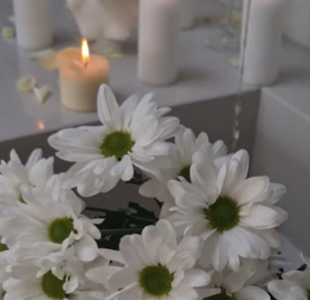Ever wonder why your home doesn’t look like the featured spread in an interior design magazine? You might think it’s because you aren’t a professional designer or didn’t hire one to decorate your space. Of course, budget and time factors also play a role. But lacking these things doesn’t mean you can’t achieve the designer look. However, what you do need are a few decorating tips to help you get there.
Five Quick Tips To Achieve a Designer Look in Your Home
Buying everything exactly like you see it laid out on a showroom floor might be easy, but it’s far from a design process. Likewise, filling your house to the brim with mass-produced decor and the latest trends also leaves things feeling a bit flat.
Use these tips to guide you in your decisions when decorating your home to get a curated, designer look.
1. Start with The Big Items
If possible, remove everything from the room barring large furniture pieces so you can start with a blank slate. In her book The Cozy Minimalist, Myquillyn Smith (The Nester) calls this process quieting a room. If you can’t empty the space, at least remove all the knick-knacks, bric-a-brac, and tchotchkes — bonus points if the rugs and curtains can come out, too.
Live with your newly emptied space for a week and think about how you want the room to function. How do you want it to inspire you and make you feel? Your answers to these questions will help you determine the best direction to take with your design plan.
Now, start with the big items. Figure out your furniture pieces first. Does your existing furniture make sense with your design plan or do you need something different? Position your furniture in the best possible place to serve the function of the space.
Next, add your rug, which should be large enough for at least the front legs of your furniture to rest on it. If you’re working in your bedroom, the rug should extend approximately 18 inches on either side and beyond the foot, and your feet should touch it when you get out of bed.
Work your way down through curtains and artwork, and then assess the space. Don’t add any small items yet. You still have one more big item to consider — lighting.
2. Layer In Lighting
Lighting is a key component in design, changing the overall look and ambiance of a space significantly. It doesn’t matter how amazing your furniture, rugs, artwork, wall color, or decor is if you have poor or insufficient lighting.
Most rooms start with a single overhead light, which is rarely enough to adequately light the room, much less set the proper mood. If you have windows in the space, you also have natural lighting to utilize, which is fantastic. But, it’s still not enough, especially when it’s nighttime or you want to close the curtains.
Start layering in various types of lighting throughout the space. Include task lighting in areas where you need it (i.e., a lamp on a writing desk or by a cozy chair where you plan to read). Add ambient lighting in the form of lamps, sconces, rope lights, etc., to fill in gaps so there’s a uniform glow throughout the room. Make all the bulbs the same color temperature and use dimmable bulbs to help set the right mood throughout the day.
3. Create Stories with Decor
Once you have your big pieces, including lighting, figured out, you may start to realize that your room doesn’t need much else, just a few finishing touches (like jewelry to a fabulous outfit). Don’t run to HomeGoods or Hobby Lobby and fill your cart with fun, cutesy pieces. Sure, this is a quick, easy way to finish your space, and you can find some likable items. However, you’re going for a designer look, so you want to be a bit more intentional.
Before you buy anything, shop around your home. Are there pieces special to you, perhaps your grandmother’s vase or your uncle’s old guitar? Depending on the style of your newly designed room, choose a few key pieces that you love and have meaning to you.
Pepper in some found items from thrift stores or HomeGoods if you absolutely can’t stop thinking about that one particular item. But no matter what you choose, limit your pieces to a few, steer clear of piling on a bunch of small items, and aim to create a story with your decor instead of just filling the space.
4. Don’t Be Afraid to Mix and Match
A quick note about choosing furniture, colors, patterns, etc. Don’t think everything has to match. When something looks good and makes you feel good, you’ll know it. So experiment with various items and see what gives you the feel-good vibes.
You don’t need to buy a matching furniture set. Instead, you might purchase the sofa from the big-box furniture store, but then find the perfect side tables at a local antique shop and the coziest chair at your friend’s estate sale.
5. Design with All Five Senses
When planning your design and pulling it together, remember you’re not just going for a particular look. Design is also a feeling. So make decisions with all of your senses.
Choose various textures to use throughout the space, play music, and use a diffuser to fill the room with pleasant aromas. You can even bring taste into a room by having a candy dish with a specific treat or offering guests a pitcher of a refreshing cocktail that mimics the ambiance of the room.
Incorporating these design tips and tricks will transform your home into a luxurious and stylish haven. By paying attention to detail and using creative approaches, you’ll create a space that reflects elegance and sophistication. If you’re still searching for the perfect home to showcase your design prowess, visit cbhre.com to explore beautiful properties that you can make your own.
For more design blogs, check out https://cbhre.com/category/design!

 Facebook
Facebook
 X
X
 Pinterest
Pinterest
 Copy Link
Copy Link






